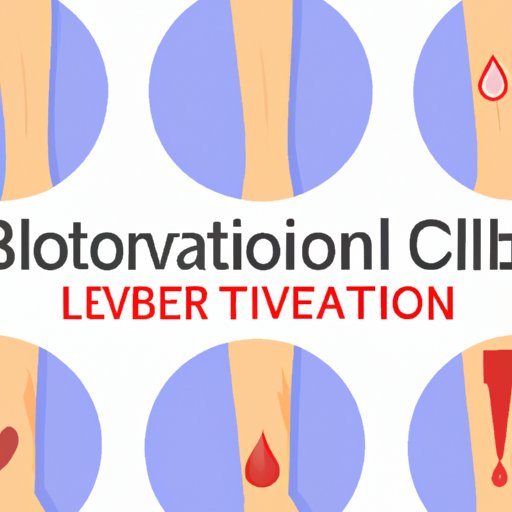
Introduction
Recognizing symptoms of a blood clot is vital to preventing serious health consequences such as pulmonary embolism and stroke. This article will provide information on how to tell if you have a blood clot, who is at risk, prevention tips, diagnosis and treatment options, and long-term effects.
Symptoms to Watch Out For
If you suspect you may have a blood clot, it is important to be aware of the following symptoms:
- Swelling, redness, and warmth in the affected area
- Shortness of breath
- Chest pain
- Severe headaches
Who is at Risk
While anyone can develop a blood clot, certain factors increase the likelihood of it occurring. Those at risk include:
- Those who smoke
- Those who are overweight
- Those who are on hormonal birth control
- Those who recently underwent surgery
Prevention Tips
While some risk factors cannot be controlled, there are measures that can be taken to prevent blood clots. These include:
- Exercise regularly
- Stay hydrated
- Avoid prolonged sitting or standing
- Wear compression stockings
Diagnosis and Treatment Options
Diagnosis of a blood clot usually involves imaging tests and blood tests to confirm its presence. Treatment options may include anticoagulant medication, surgery, or specialized clot-busting procedure depending on the severity and location of the clot.
Complications and Long-Term Effects
If left untreated, blood clots can lead to serious complications and long-term effects on cardiovascular health. These may include:
- Pulmonary embolism
- Stroke
- Post-thrombotic syndrome
It is essential to seek medical attention as soon as possible if you experience symptoms of a blood clot to minimize the potential for these effects.
Conclusion
Recognizing symptoms of a blood clot is essential to protecting your health. By being aware of risk factors, prevention tips, and seeking prompt medical attention, you can reduce the likelihood of serious complications and long-term effects of blood clots.




